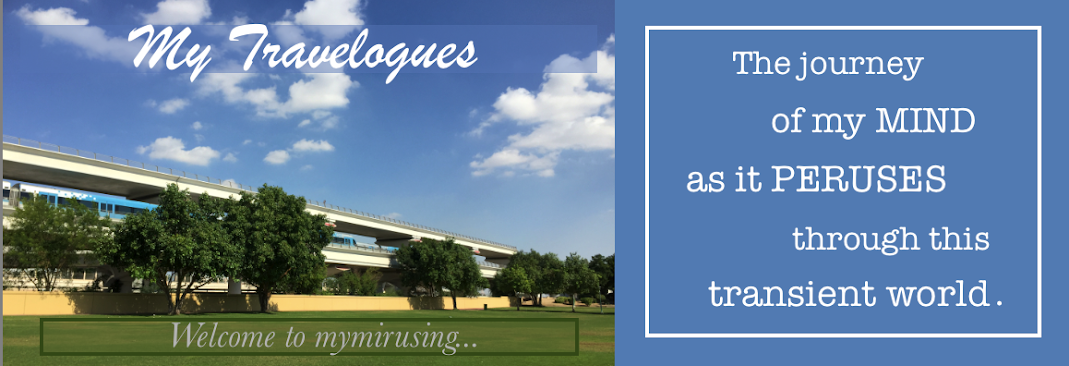"Settling into a new country is like getting used to a new pair of shoes. At first they pinch a little, but you like the way they look, so you carry on. The longer you have them, the more comfortable they become." -Tahir Shah, In Arabian Nights.
Settling in a new country every couple of years or so is stressful that the joys and opportunities associated with it are belittled. The above quotes by Tahir Shah aptly describes my current situation. It has been nearly six years that I have traveled in and around the Gulf. Thanks to my husband's job, we've moved in and out of Oman and UAE. We have resided in places, the names of which I never ever knew existed and would never ever think of googling. Back after a refreshing trip from Dubai recently, I started writing this blog. But here, I am not going to write about my glitzy Dubai trip, instead I dedicate this blog to Muscat - the Capital city of Oman and the city considered to be as a crown jewel of Middle-East cities.
 |
| View of Muscat - with its greens, white buildings, and blue sea beyond |
The picture above depicts Muscat in a triple-band layer as I see it - the greens, followed by the white low height buildings and then the vast blue sea as far as the eye can see.
Compared to the cities of Dubai or Abu Dhabi in UAE, the city of Muscat is calm, serene and yes green. Looking at the pictures, nobody would believe that it is a semi arid region. Muscat's urban-scape is characterized by low lying white or sand coloured buildings. At the most you'll find a ten story building scattered in some areas and the minarets scaling above, but there are no skyscrapers at all (A maximum of 12 floors is permitted here). When all the major cities across the globe are undergoing massive transformation, the Ruler of Oman hopes to retain the traditional look of Muscat city and at the same time achieve infrastructural growth and be at par with other capital cities.
Compared to the cities of Dubai or Abu Dhabi in UAE, the city of Muscat is calm, serene and yes green. Looking at the pictures, nobody would believe that it is a semi arid region. Muscat's urban-scape is characterized by low lying white or sand coloured buildings. At the most you'll find a ten story building scattered in some areas and the minarets scaling above, but there are no skyscrapers at all (A maximum of 12 floors is permitted here). When all the major cities across the globe are undergoing massive transformation, the Ruler of Oman hopes to retain the traditional look of Muscat city and at the same time achieve infrastructural growth and be at par with other capital cities.
 |
| View of the Sultan Qaboos Street The palm trees adorn the entire stretch of road |
 |
| View of the Sultan Qaboos Street; A trunk road running throughout the city |
 |
| The orange-and-white taxis Picture taken at taxi stand - Grand Mosque, Muscat The blue-white cab belongs to the Royal Oman Police |
Public transportation in Muscat is devoid of a rail or a metro network, which I feel is a minus point for Muscat. Muscat indeed needs to develop a viable public transport so that people's dependency on private vehicles reduces. The local people of Oman don't seem to be in any hurry to change their city. They are too content with the Sultan and his achievements. Ask the people here, even the Indian expatriates here are so content living in the pristine environs that they do not mind the slow development.
 |
| Footbridge across the main road for the pedestrians |
Muscat overall is a clean city and is well maintained by the municipality. When we landed in Muscat the first time, we were happy that there were no flies or mosquitoes here. In India, people keep their homes clean but when it comes to the streets their responsibility ends at the front door. However, here you have to keep even your car clean. The Oman police may fine you with OMR10 as a fine for driving a dirty car.
As a child, I used to be fascinated by the Arabian Nights tales such as Sindbad the Sailor and so on. Little did I know that the land whose stories I read as a child will one day be our home for several years to come. I hope to explore more of this land known for its musks, mosques and mystiques and will continue sharing my experiences while I am here.

No comments:
Post a Comment